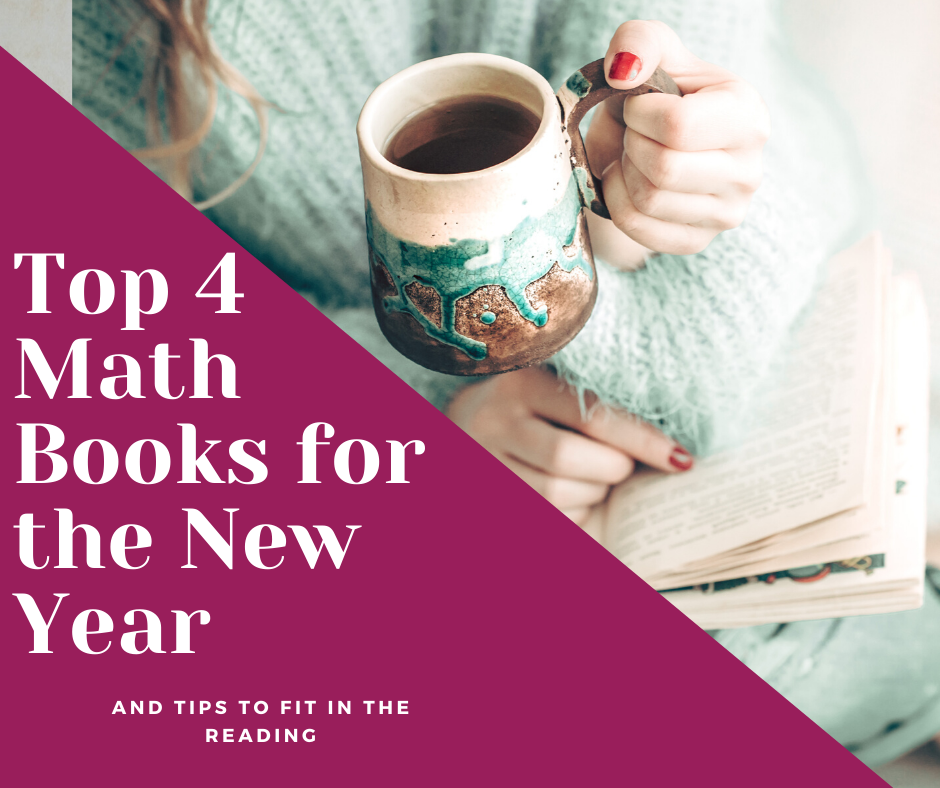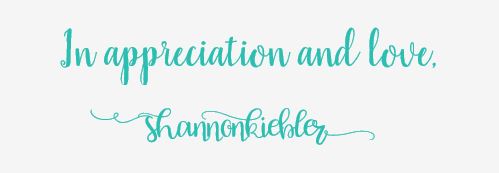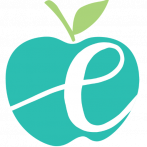
30 Dec Books for the New Year
Disclaimer: I have truly read and love the books posted below. They do contain affiliate links.
Tis’ the season, and if you are like me, your ‘TO Read’ pile has grown exponentially over this semester and you are looking forward to some downtime over winter break to dive into that pile.
Also, like me, you’re probably exhausted and feel you barely have time to do your daily tasks, much less indulge in reading. Your body is tired, your mind is tired, and Real Housewives of Orange County (don’t judge me), or This is Us, sounds much more appealing than a math book at the end of a mentally and physically exhausting day.
I’d like to say I’m busier than people like Warren Buffett, Mark Cuban, or Bill Gates, but the reality is I doubt that I am. I won’t venture to say that they are busier, but I would say I feel teachers are about on equal playgrounds. ? At any rate, inc.com reports that these prominent folks read loads and attribute much of their success to their reading habits.
Warren Buffet reads 500 pages a day.
Mark Cuban reads 3 hours a day.
Bill Gates reads 50 books a year (do the math, nearly 1 a week!).
I’ve always been a reader, but in recent years I’ve tried to adopt some habits to help me become a better person, and that includes increasing the number of books I read each month/year. We all know that as teachers we don’t need any more guilt than we already feel for just about everything we feel we ‘should’ be doing, but I hope instead to inspire you to try creating one new habit in the new year to include more professional reading.
I love audible. Like a lot. I do a fair bit of driving/commuting, and it is a great way to pass the time. I mostly listen to personal and spiritual development books on audible. I am very partial to audible books read by the actual authors. My faves this year have been:
Everything Is Figureoutable, Marie Forleo
Girl, Stop Apologizing: A Shame-free Plan for Embracing and Achieving Your Goals, Rachel Hollis (she reads her book as well, and I have a sincere girl crush on this woman who is paving the way for women to own who they really are!)
The 15 Invaluable Laws of Growth: Live Them and Reach Your Potential, John Maxwell.
Dare to Lead: Brave Work. Tough Conversations. Whole Hearts., Brene Brown.
Read before bed. I don’t last long, as I fall asleep quickly once I hit the pillow, but I have really tried to change my habit of ‘reading my phone’ in bed and instead go back to reading an actual book. I can complain about how exhausted I am, but then spend an easy hour on my phone in bed. Anyone else? What if we used even ten minutes of that time in a book?
Read when your kids read. Experts say one of the best things we can do for our children is model reading. When I’m home, we have family reading time (I know, I’m such a teacher), but I really do love spending just 15 minutes with everyone quiet in a book of their choice. I also love the idea of doing this during DEAR time or other independent reading times during our instructional day. Just 10 minutes a day could get you nearly through several pages. What better way to send the message that reading is important than to join our students in some independent reading time?
Join a Book Chat or Book Study I have a love/hate relationship with book chats/clubs due to the accountability factor, but let’s face it, they work. Grab some teacher friends and commit to reading a book that will improve your teaching. You only have to meet once a month, but it will help you to get it done. You don’t even have to meet live! Twitter book chats are happening all of the time. They are a great way to connect with the authors, other teachers who are reading, etc. If you aren’t already on Twitter for professional reasons, this would be for sure an A+ recommendation from me.
Which of these recommendations feel the most manageable to you? To help you get started, I’ve shared some of my faves of the last few months below. I hope this is ‘just in time’ so that you can add them to your holiday wish list and get started over break or in the new year!
If you read 5 Practices for Orchestrating Discussion by Margaret Smith and Mary Kay Stein, then you’ll love this sequel by Margaret Smith, Victoria Bill and Miriam Sherin. If you haven’t read, 5 Practices, read that first!! It is one of my top 5 all-time favorite teaching books. Their sequel has many more vignettes, examples, links to videos, questioning techniques, etc. If I’ve had the honor of teaching in your classrooms, you’ve seen me utilize the 5 practices in nearly every lesson I teach.
Open Middle Math, by Robert Kaplinsky, takes you through a student’s problem-solving process and a teacher’s action steps while using open middle problems. Although the book is written for 6-8th grade, I found it very applicable to my grade ban of K-5. The ideas are transferable, and specific examples, problems, and worksheets for K-5 can be found on their website. I get asked nearly daily about how to extend tasks to create more challenges. Although open middle problems could be considered ‘extensions,’ I believe they are good for ALL kids and could be just what you need to re-engage students in exciting mathematics. The book is full of examples, FAQ’s, and practical application. What I love the most is it isn’t about creating new lessons. You just replace a key problem or worksheet full of problems with one open middle problem. The problems cause students to do multiple rounds of computation in a much more engaging and higher-order thinking way. You know I love to campaign against workbooks and open middle problems align perfectly with my philosophy. One example, as explained in the book, is “What is the greatest area you can make from a rectangle that has a perimeter of 24 units?” Instead of giving students a worksheet of rectangles and their job is to calculate the area, in this problem, they are doing a ton of calculating, but in a much more engaging and higher-level way.
Nearly every conversation I have with teachers, parents, or administrators at some point lands on fact fluency. It’s a hot topic. You can read about my key strategies that I recently blogged about here. This book helps us take it to the next level. Jennifer Bay Williams is an all-star (author of lots, but mostly known for Teaching Student-Centered Mathematics alongside John Van de Walle, Karen Karp and LouAnn Lovin). She joins forces Gina Kling to provide both primary and intermediate teachers with practical ways to achieve fact mastery. They begin with addition/subtraction and work their way through multiplication and division. Their progress monitoring tools are simple to use and the games are easy to implement. I love their focus on foundational facts before moving to derived facts.
For all those who know me, you know I’m obsessed with counting during classroom transitions. I believe it is otherwise wasted downtown. I have always been a fan of counting collections, especially when I taught Kindergarten, but this book has shed light on constructive ways to use both choral counting and collections K-5 beyond my idea of using counting during transitions. They make it visual and even more engaging.
As a former math interventionist, I often gave screeners to K-5 kiddos and every screener had counting activities So many of the children I assessed, even those who typically scored higher on standardized assessments, struggled with counting. This book has great ideas for easy implementation to tackle this very issue. Other than having a total math girl crush on authors Megan L. Franke (CGI guru) and Elham Kazemi (who’s work I loved in Intentional Talk: How to Structure and Lead Productive Mathematical Discussions), there are lots of reasons to jump into this read. It is an easy read and can be used as a reference guide if you are short on time.
And as a bonus: My personal holiday break reading list:
The Tattooist of Auschwitz: A Novel by Heather Morris (Historical Fiction: based on a true story)
When Breath Becomes Air by Paul Kalanithi (a Memoir)
Catching Christmas, Terri Blackstock (Christian Fiction- like the book form of a Hallmark Movie)
Though Waters Roar, Lynn Austin (Historical Christian Fiction)
They were all delightful. What books would you add to the list above? I would love to hear your recommendations!!
Happy Reading!! Here is to a year of personal and professional growth!


Gretchen Kleinsasser
Posted at 22:44h, 01 JanuaryShannon, I love all your ideas of fitting in reading time. I do love the idea of a family reading time… we do this well on vacation but need to do it daily at home. I highly recommend Bread and Wine by Shanuna Niequist and if you like thrillers… The Winner by David Baldacci. I will keep you posted on educational books but these are just on the top of my list this break. ~ Gretchen
skiebler
Posted at 02:27h, 13 JanuaryI love it, thanks for sharing Gretchen! I love Shauna. I’ll check it out.